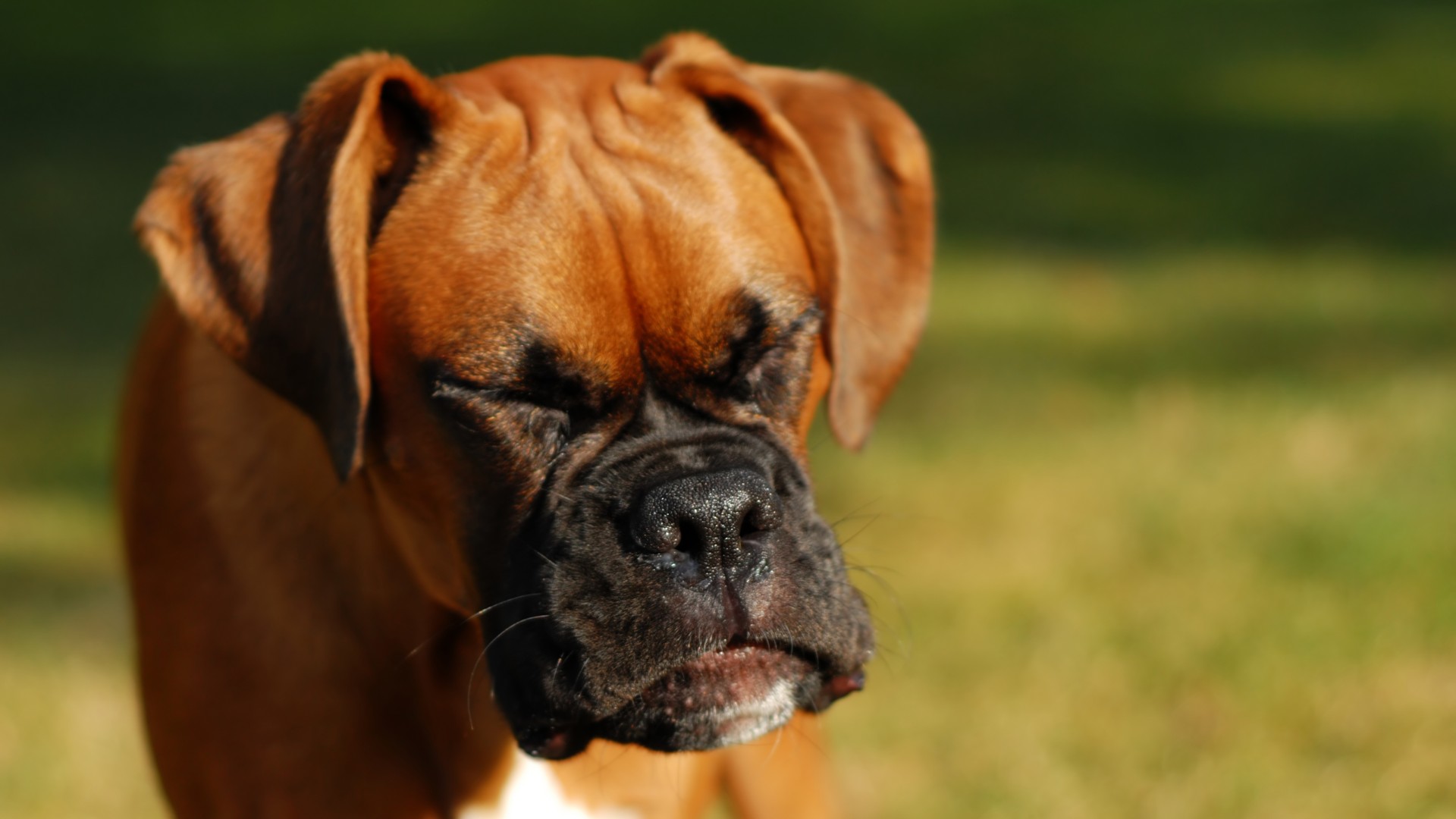
In Spring 2021 my Romanian rescue dog, Buddy, started to have runny eyes, to the point where I was wiping them multiple times a day. After bathing his eyes for with boiled and cooled salt water and seeing no improvement, I decided it was time to visit the vets. He’d also been a bit wheezy and sneezy at times – although was otherwise happy in himself.
Our vet carried out a general health check of Buddy, which included listening to his heart and breathing. She used something called the Schirmer tear test to measure his tear production, which involved inserting a paper strip into his eye, followed by colored eye drops to check how well his tears drained into the nose. Buddy had a green nose and green eyes for a few hours afterwards which looked quite funny!
The vet concluded that Buddy was likely to be experiencing seasonal allergies and prescribed some anti-inflammatory eyes drops to help in the short term. I had previously switched Buddy’s food because of a sensitive tummy, using this list of best dog food for allergies, but I had no idea he might also be sensitive to grass and pollen. Since we both love being in nature I was a bit worried about how this could affect our walks, especially in the spring and summer.

Grace Paxton qualified from Bristol University in 2020 and spent her first few years in general small animal practice in Wales before moving to a small independent practice in Bristol in 2022. Skin issues make up a large portion of her consults, but her main area of interest is in canine behaviour, which was sparked after adopting her rescue dog Piper in 2021. She is currently working towards becoming a registered veterinary behaviourist with the ABTC/ABPC.
In addition to spending time with Piper, she has competed in powerlifting and regularly plays Dungeons and Dragons.
Is it common for a dog to have allergies?
I had never heard of grass allergies in dogs, but it turns out that they’re quite common. Vet expert Grace Paxton told me, “Like humans, dogs can experience allergies or sensitivities. These can come from the environment, parasites, or from their food.”
It’s thought that some dog breeds are more genetically predisposed to develop allergies, but any breed of dog can be allergic, according to the MSD Veterinary Manual. Most dogs experience their first symptoms between the age of six months and 3 years. This fits with our experience, as Buddy first started showing symptoms around his first birthday.
The MSD Veterinary Manual describes how allergies are diagnosed, which is done by excluding other potential conditions alongside a discussion of the dog’s age, breed, symptoms and onset of symptoms. There are currently no tests to positively identify allergies.

Is a dog being allergic to grass fatal?
Fortunately, Paxton told me that grass allergies aren’t life threatening. She explained, “Grass allergies are classed as a delayed hypersensitivity reaction which just means it can take a few exposures before we notice symptoms.”
Get the best advice, tips and top tech for your beloved Pets
However, on rare occasions dogs can experience a severe allergic reaction known as anaphylaxis. The MSD Veterinary Manual says that the signs of anaphylactic shock in dogs are different to those seen in humans, and even other domestic animals, because the major organ affected in dogs is the liver. Dogs are more likely to experience severe hives, facial swelling, wheezing, difficulty breathing and an increased respiratory rate. They may also experience vomiting and diarrhea, with or without blood.
Although rare, anaphylaxis is a medical emergency and if you suspect your dog is experiencing symptoms you should contact your nearest emergency vet immediately.
How I manage having a dog that’s allergic to grass…
When Buddy was first diagnosed with grass allergies, I was worried we would struggle walking in the local park, let alone the long nature hikes which we both enjoy. Fortunately, there are lots of different techniques we’ve been able to put in place so that we’re both still able to enjoy the outdoors during pollen season.
After every walk I wash Buddy’s paws and wipe his face and body to remove any pollen which may have gathered there. If his eyes start weeping, I’ll begin by bathing them with boiled and cooled salt water and if it continues, I’ll call the vets for some eye drops. Usually a week of using eyedrops is enough to soothe any irritation.
Pollen can easily enter the home through open windows and doors, and at this time of the year the nearby trees shed their blossoms so quickly that they blow around in fluffy clumps. During the day I try and keep the doors and windows shut and, if something does make its way in, I’m very quick to get the vacuum out.
Paxton added that Omega 3 supplements and Vitamin E can be useful in aiding general skin health, especially if your dog suffers with itching. She recommended the Duoxo range of wipes, shampoos and mousses which are specially formulated to soothe itchy and irritated skin.
Paxton also cautioned that some dogs may need medication seasonally if their allergies are really affecting them. If this is the case for your dog, contact your vet to discuss your options. Do not give your dog human antihistamines without consulting your vet, as they often contain other ingredients such as decongestants which can be toxic for animals.

Signs of allergies for a dog
Paxton says that common signs of allergies to look for are licking either a specific area or the whole body, paw chewing or licking, ear scratching and/or irritation and red or watery eyes.
Buddy’s symptoms were mainly runny eyes and nose, as well as a bit of sneezing and wheezing, but he also had red paws that weren’t otherwise bothering him. I asked Paxton about this and she told me, “The redness on paws can be saliva staining the fur, or it can be redness of the actual skin which is a bit irritated – which fits if he’s having other symptoms of grass allergies.”
However, red paws on dogs can be a sign of a more serious illness so it’s important to understand the different causes of red paws and seek advice from your vet if you’re seriously asking yourself ‘is my dog sick?’.

Sara is a freelance writer and communications consultant with several years’ experience
working in communications for the third sector and higher education. She is guardian to a
Romanian rescue dog (Buddy) and adopted cat (Boots) and has fostered several rescue cats.
She’s passionate about responsible animal guardianship and uses Instagram to share the
unexpected challenges and joys of adopting an overseas rescue dog.
